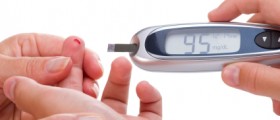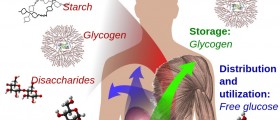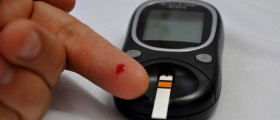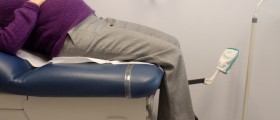
Causes of Diabetes in AnimalsDiabetes can develop in animals just like in humans. This occurs when an animal’s body doesn’t produce enough insulin or use insulin improperly. Pancreas is the organ that makes insulin which is required for the body to properly use sugars, fats and proteins. Animals can be affected by type 1 and type 2 diabetes.
Symptoms of Diabetes in AnimalsThe onset of diabetes is usually very gradual and easily missed by the owner until it is quite advanced. Symptoms of diabetes in pets are similar to symptoms in humans. Your pet probably suffers from diabetes in case following symptoms are present: Weight loss, Decreased appetite, Increased thirst and frequent urination, Pungent smell of breath. Ketoacidosis occurs when high concentration of ketones is present in the urine. Ketones are acids produced by the body in case of insufficient insulin in the blood. Diabetes with ketoacidosis have additional symptoms such as vomiting and depression.
Hypoglycaemia or low blood sugar can occur in animals because of excessive insulin administration. Hypoglycaemia involves the following symptoms: seizures, weakness, dullness, drowsiness, restlessness, disorientation, and coma.
Risk FactorsMiddle-aged and older animals are most commonly affected by diabetes. This condition is the most common in female dogs and male cats. Also, overweight animals are more prone to develop diabetes. Diabetes in young animals is considered to be genetic.
Treatment for Diabetes in AnimalsLong-term treatment of diabetes includes injections of insulin on a daily basis. Veterinarian may recommend special insulin. In case of ketoacidosis, the animal will receive intravenous fluids and rapid-acting insulin.
Insulin should be kept in refrigerator and mixed prior to administering. Mixing of insulin should be done by gentle rolling and without shaking.
Diabetes is manageable with ongoing care. When diabetes is under control, the animal will restore normal thirst, appetite, constant weight and good vision. Also, this way pets may have longer and healthier life. Diet, exercise and blood glucose monitoring are vital part of controlling diabetes in animals.
Diet for affected animals should consist of dried or canned foods. It is best to use foods high in protein and fiber with restricted fats and carbohydrates. One third of total daily meal should be given to animal prior to injecting insulin.
Exercise is essential to avoid obesity in animals since excess fat leads to insulin resistance. Exercise program should be set up and consistently followed because this may help in keeping constant blood sugar level.
Blood glucose monitoring is important because this allows the owner or veterinarian to adjust the dosage of insulin based on the results.

















Your thoughts on this
Loading...